Tuesday, a five-story crack opened up in a massive industrial building on the outskirts of Bangladesh’s capital. Building managers cleared the unsafe building, which housed factories making clothes for western companies like Benetton, Children’s Place, Joe Fresh, JC Penney, and Primark.
The next day, the employees who worked in a bank and retail stores on the lower floors were told to stay home again — but managers of the six garment factories in the upper floors ordered their employees, most of who are young women, to come to work anyway. Workers protested, but the bosses threatened that anyone who refused to return to the shop floor would lose a month’s pay.
Less than an hour after garment workers sat down at their sewing machines to begin their 11-hour day, the building collapsed. Over 400 are confirmed dead, and countless more are still missing. It’s the deadliest disaster in the history of the garment industry.
As global brands like Walmart and Benetton rush to deny that they had anything to do with the tragedy at Rana Plaza, staff from the Bangladesh Center for Worker Solidarity (or BCWS) are interviewing survivors and searching the ruins to reveal which corporations did business there, and helping make sure that the compensation that companies are committing will reach all the families that have lost loved ones. They did the same thing after a fire at the Tazreen factory killed 112 workers last November. It was their investigations that proved conclusively that Walmart was complicit in the tragedy, despite Walmart’s denial.
The BCWS represents some of the world’s poorest workers, and it relies on a shoestring budget to do its utterly essential work. Responding to one of the worst industrial disasters in history has stretched its meager resources to the breaking point, but it’s still pressing on because it knows that holding big clothing corporations accountable in the wake of a tragedy like this is key to preventing the next disaster.
Click here to make a contribution to support the brave organizers who are going into the rubble of Rama Plaza to finish finding evidence to hold corporations accountable — before the evidence is destroyed for good. A donation of $3 pays for a full hour of an investigator’s time.
Each time one of these tragedies happens — whether it’s this building collapse or the Tazreen fire that killed 112 in November or one of the 30 or 40 other fires that happened in between — global clothing companies scramble to claim they had nothing to do with what happened. And it’s easy for these brands to get away with denying their involvement, unless someone goes in to do the painstaking work of documenting what companies ultimately sourced from which factories.
That’s where BCWS comes in: Every time there is some kind of catastrophe, they mobilize their researchers to go into the rubble and find the labels that prove that Walmart, or H&M, or Gap, or any one of hundreds of companies bought clothes from that factory. Their work allows groups like SumOfUs.org to pressure those brands to compensate workers and support agreements like the legally binding Bangladesh Fire and Building Safety Agreement that we’ve been pressing companies to adopt.
And BCWS’ strategy works: In many cases, manufacturers and retailers pay compensation on the basis of BCWS’ investigations. After pressure by activists using documents found by BCWS, four companies that sourced from collapsed factories have already agreed to compensation for victims: Primark, Loblaw, Texman and El Corte Inglés. But many other companies sourced from Tazreen and Rana, and much more work is needed to uncover which brands sourced from which factories – and to use that evidence to force them to pay up.
Can you pitch in $3, or whatever you can afford, to give the Bangladesh Center for Worker Solidarity the resources it needs to keep going into the rubble until all the evidence of companies that bought from the factories that collapsed is found?
BCWS doesn’t stop at going into the factories after disasters. Since the vast majority of factory workers are poor young women, and those women are cut out of civil society in Bangladesh, BCWS makes a special effort to train young women in their rights at work. They provide tools for organizing unions, and engage in advocacy for a higher minimum wage and safer working conditions in the factories themselves. Even corporations recognize their value. Levi Strauss & Co said that BCWS is “a globally respected labor rights organization, which has played a vital role in documenting and working to remedy labor violations in the apparel industry in Bangladesh.”
SumOfUs.org members are familiar with BCWS founder Kalpona Akter. Two thousand SumOfUs.org members funded her and a survivor of the Tazreen fire to tour the U.S., during which she challenged global companies to protect their workers. She and her colleagues have shown incredible bravery in the face of a wave of repression. During their campaign to raise the minimum wage, Bangladesh’s Prime Minister called labor activists “enemies of the nation.” Kalpona and other leaders of the BCWS were arrested and held on completely fabricated criminal charges of inciting riots and sabotage until an international outcry forced the government to release them. Last year, Aminul Islam, a BCWS organizer, was kidnapped, tortured, and murdered after being tracked, beaten, and threatened with death by security forces. But the violence hasn’t stopped the organization — it has inspired organizers to redouble their efforts.
If we can give BCWS the resources they need to respond to this massive tragedy, then we’ll have a shot at finding out who knew what when, and who is responsible for paying compensation to the workers who survived, and the families of those who died. And we’ll remind Bangladeshi authorities that if they try to interfere with the BCWS, people around the world will be watching. That’s why we’ve set a goal of raising $20,000 for BCWS — a huge boost to its annual budget. If we raise more than that, we’ll put it towards similar campaigns to protect workers’ rights worldwide.
Click here to chip in $3, or whatever you can afford, to help make sure genuinely independent investigators have what they need to stop these tragedies from happening.
This is the worst industrial disaster in the history of the Bangladesh garment industry — and it’s no accident. It is the natural symptom of a toxic global economic system built on multinational corporations paying people as little as possible to produce the goods they sell, so those products can be sold for maximum profits. The only winners in this system are the corporate executives and investors who see their bottomless Swiss bank accounts fill with ever-growing profits.
Thankfully, there’s one group we can trust to police these corporations and ensure that Bangladeshi garment workers are treated humanely: the workers themselves. By supporting the Bangladesh Center for Worker Solidarity, we’ll give those workers the resources they need to fight back and a build a more just global economy from the ground up.



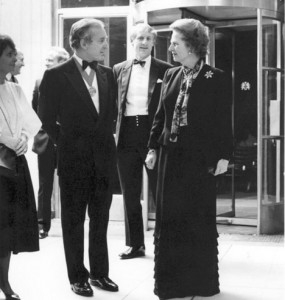
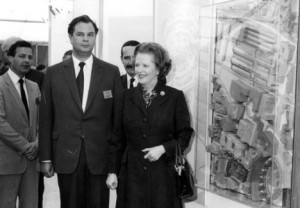
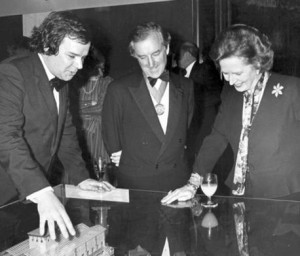
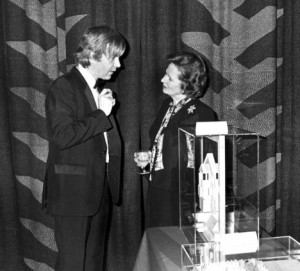
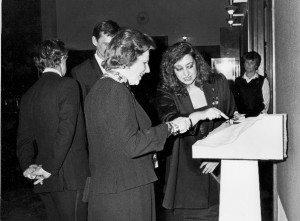
 The Royal Party meet Tube staff and take a closer look at London Underground’s historic and future fleet· New S-stock train named “Queen Elizabeth II”
The Royal Party meet Tube staff and take a closer look at London Underground’s historic and future fleet· New S-stock train named “Queen Elizabeth II”